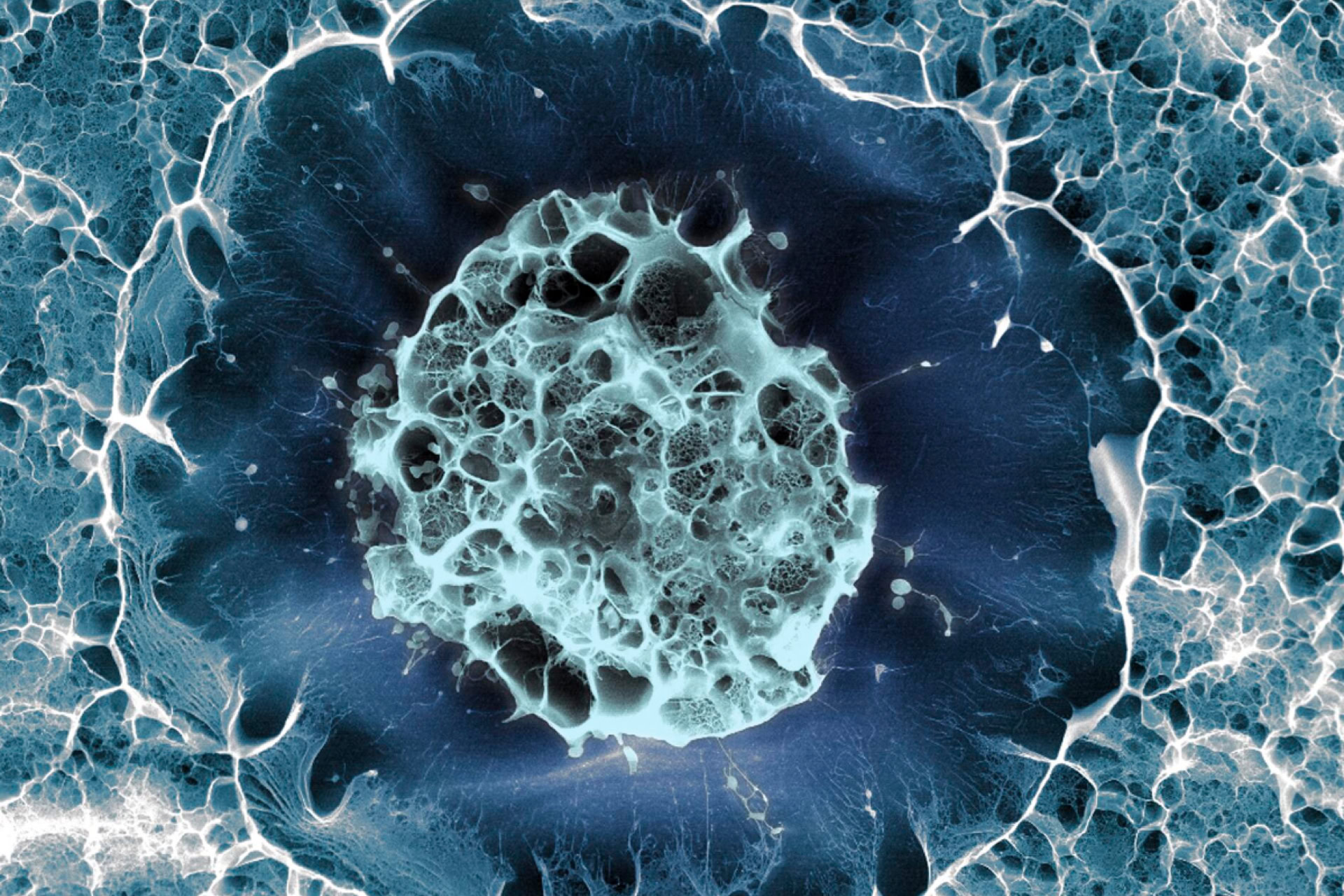A team of scientists based in France and Italy have published work showing a huge improvement in the condition of dogs suffering from a canine version of muscular dystrophy when treated with adult stem cells. Duchenne muscular dystrophy is a serious disease that affects 1 in every 3500 male births. The illness is caused by a gene mutation in a protein called dystrophin - resulting in complete absence of the protein - which plays a crucial role in maintaining muscles. The disease first appears at around three to five years of age with progressive muscle wasting and eventual paralysis, until premature death, usually in the twenties, through weakness in the heart and lung muscles.
The researchers were following up successful work on mice which used stem cells to replace the missing protein in animals modified to lack dystrophin. As mice missing the dystrophin protein do not develop the disease the team next turned to dogs who do develop a form of the disease very similar to Duchenne muscular dystrophy in humans. The team used two approaches, one used cells transplanted from healthy dogs in combination with immune suppressing drugs to prevent rejection and the second approach used muscle precursor cells from the sick dogs modified to express the missing protein. In the first approach using healthy dogs, the researchers took cells called mesoangioblasts from small blood vessels in muscle. Mesoangioblasts are a type of blood stem cell programmed to develop into muscle. The cells were then grown in the laboratory until there were sufficient numbers to use in injections on the sick animals. Five monthly injections of tens of millions of the healthy cells were given to the dogs suffering from the illness, the cells were then carried around the body where they integrated into affected muscles improving their strength.
In the second approach the team again removed mesoangioblasts from the blood vessels in the muscles, but this time from animals suffering from the muscular dystrophy-like illness. They then used genetic modification techniques to correct the faulty copy of the dystrophin gene, again growing the cells in the laboratory to gain sufficient numbers. The modified cells were then injected back into the sick animals, but no improvement was found, even though the gene therapy seemed to work at a molecular level. For the dogs treated using donated healthy cells the improvement was notable - affected animals usually develop walking problems by 8 months of age, after stem cell treatment some of the animals were still walking well at 13 months old. The scientists are optimistic about being able to improve the approach using a modified version of the sufferer's own cells by using a different version of the dystrophin gene. Using a modified version of the sufferer's own cells is very desirable as it would avoid a lifetime of anti-rejection drugs. The dystrophin gene is notoriously difficult to work with as it is the largest gene in the human genome at two and a half million base pairs long.
The work was carried out at the San Raffaele Scientific Institute in Milan, Italy, in collaboration with the University of Pavia and the Veterinarian School of Macon Alfort in Paris. Lead researcher Professor Giulio Cossu hopes to begin trials in humans in the next few years, probably first utilising the approach that worked best in dogs - stem cells from tissue matched donors. He commented, 'Even though by itself it may not lead to a complete cure, it would ameliorate the condition, then step by step we could work on this to the point of getting a real cure.' The research is published in the journal Nature.
Sources and References
-
Dog helps find cure for fatal muscle disease
-
Stem cells reverse muscular dystrophy
-
Stem cells 'treat muscle disease'
-
Stem cells treat wasted muscles




Leave a Reply
You must be logged in to post a comment.